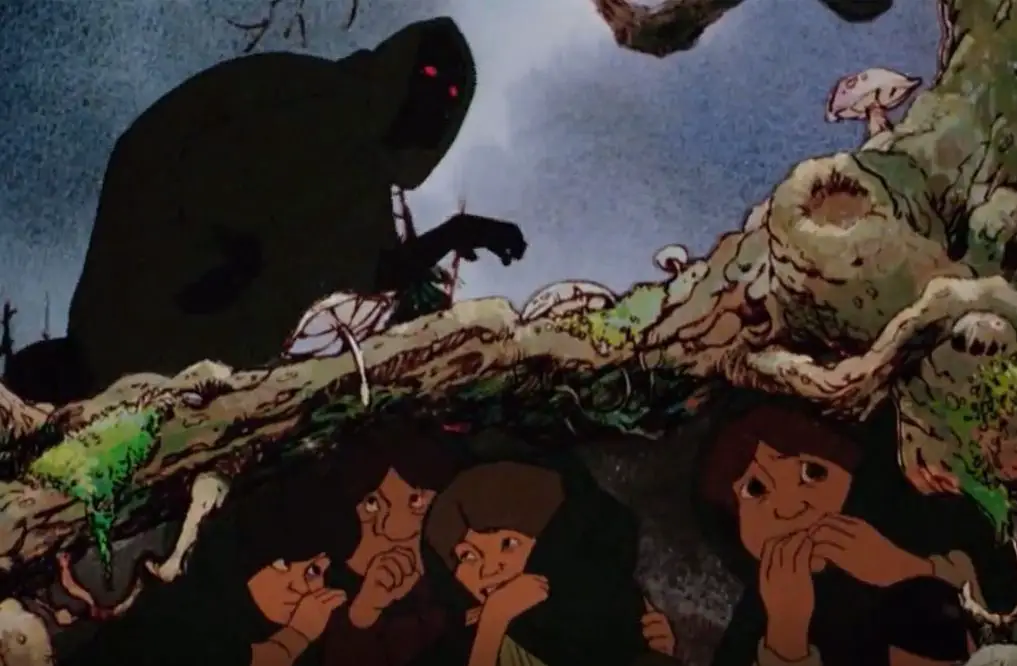Content Warning: racial slurs, violence
The world of adult animation is unfair. Despite potentially having more creative capabilities in storytelling and design than more child-oriented content, what tends to get the most attention are the films and television shows that are still immature. Swearing and violence and sex, oh my! When placed front and center, it’s often deemed a spectacle of content that can hold about the same level of maturity and edginess as an eighth grader whose addiction to Reddit is troubling.
There is value in adult animation, it just so happens that the good stuff usually isn’t always the most mainstream. When much of the animation sector is dominated by more family-friendly companies like Disney, Dreamworks and Illumination, something directed more toward a mature audience can be a breath of fresh air. However, there was a time when animation companies like Disney were failing, which laid the ground for someone like Ralph Bakshi to make a name for himself.
Ralph Bakshi was an animator and director who found much work and success during Disney’s Dark Age in the ’70s and ’80s as a man who made animated feature films strictly for adults. His work is often bold and brash, diving deep into topics such as racism, police brutality, rape, queer identity, transphobia, the mafia, substance abuse, fascism, war and so much more. He was celebrated and controversial; revolutionary and regressive; crucial to the history of animation but rarely remembered in the public eye. So, who is this guy?
Who is Ralph Bakshi?
Born in Palestine but raised in Brooklyn, Ralph Bakshi grew up in a poor, racially diverse neighborhood called Brownsville. Due to his interest in drawing cartoons and his reputation for being a rebellious student, his principal sent Bakshi to the Manhattan School of Industrial Art just to get him out of his hair. After graduating, he took to a number of animation jobs working in numerous studios until he formed his own, Bakshi Productions, where he took to working on his own creative endeavors.
This was actually the perfect time for him to start his own company to focus on more mature works of animation. Animated short films were becoming less commercially viable since the late 1960s; Walt Disney’s death in 1966 would start the Disney company’s dark age until the release of “The Little Mermaid” in 1989. Furthermore, the disestablishment of the Hays Code in favor of the MPAA made more adult-oriented work available for distribution. Though the 1970s were considered a dark age for animation in America, they also spawned a revolution within the medium.
His first two movies, “Fritz the Cat” and “Heavy Traffic,” were slice-of-life films that featured scenes depicting life on the hard streets of Brooklyn; the first was based on a comic by Robert Crumb, and the second was more autobiographical. They were loud and unapologetic in their imagery, and radically different from the safe, sanitized children’s content released just a few years back. The success of the first-ever X-rated animated films (an older version of the modern NC-17 rating) gave Bakshi the reputation of a crude, provocative visionary with great potential. Everything was going great until his third film: “C**nskin.”
Loosely based on the Uncle Remus stories, “C**nskin” follows three African Americans as they make their way to Harlem and find themselves “taking care of” the racist cops and the organized crime system that plague the neighborhood. Upon release, the film quickly became the most controversial of his career, largely due to its portrayal of African Americans through exaggerated body movements and minstrel imagery. The Congress for Racial Equality protested it while the NAACP defended it as a difficult satire; its poor reception at the box office ensured a permanent stain on Bakshi’s career.
The problem with the film is that — a lot like “Blazing Saddles” — not many people really got the point, which was to display how America enforces and perpetuates the repression of minorities. When the idea of America itself is personified as a busty woman who tempts black men only to beat, accuse and kill them, it’s not easy to dismiss the film as entirely worthless. Although a difficult watch, as it portrays nearly every character of any background as a caricature or a stereotype, and it does so to point out how ridiculous the whole situation really is. It is up for debate whether it was Bakshi’s story to tell, but it was one that he felt he had to.
After the controversy of “C**nskin,” Bakshi refrained from making street films and took to making animated fantasy films. His first was the debatably family-friendly film “Wizards” and then “The Lord of the Rings,” which was notably the first-ever film adaptation of J.R.R. Tolkien’s famed trilogy. For years, Tolkien’s “The Lord of the Rings” trilogy was considered unfilmable due to its expectantly high budget, as well as the fact that trilogies and series weren’t as common as they are today. Even if Bakshi could only adapt the first two books (the planned sequel was eventually canceled) he managed to do it and show that dark fantasy could be profitable.
As his career continued, he teetered between commercial success and failure while dealing with production interference. Ironically, as anime and “The Simpsons” catapulted adult animation into the mainstream in the ’80s, Bakshi continued to struggle financially. Eventually, he retired from filmmaking and working with television shows and took up painting, though his legacy would not be forgotten by those in the industry.
His contributions toward animation were trailblazing, leaving animators, filmmakers and television writers free to explore darker themes. He engaged his audience in critical thought through his striking artistry, and his mark on the world of animation is indelible.

















